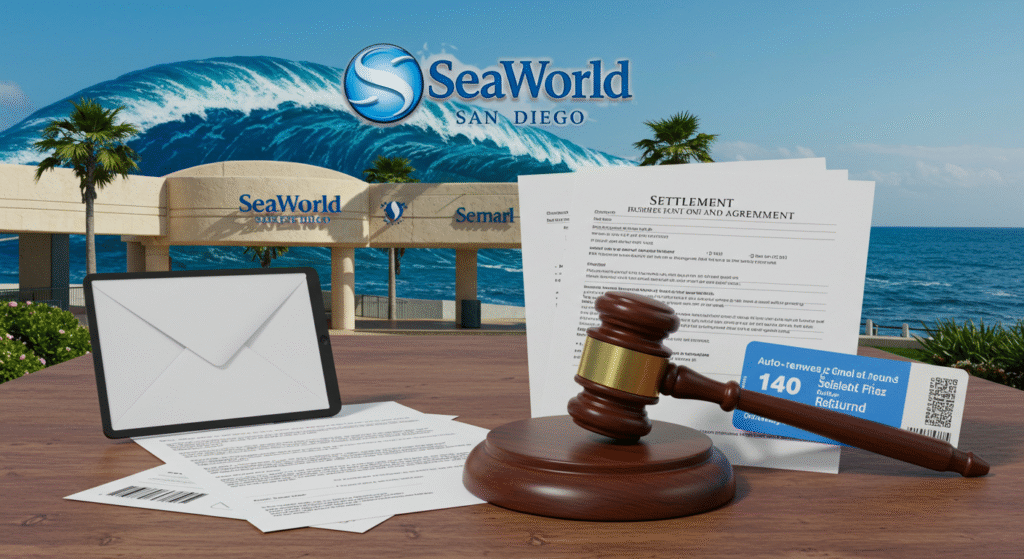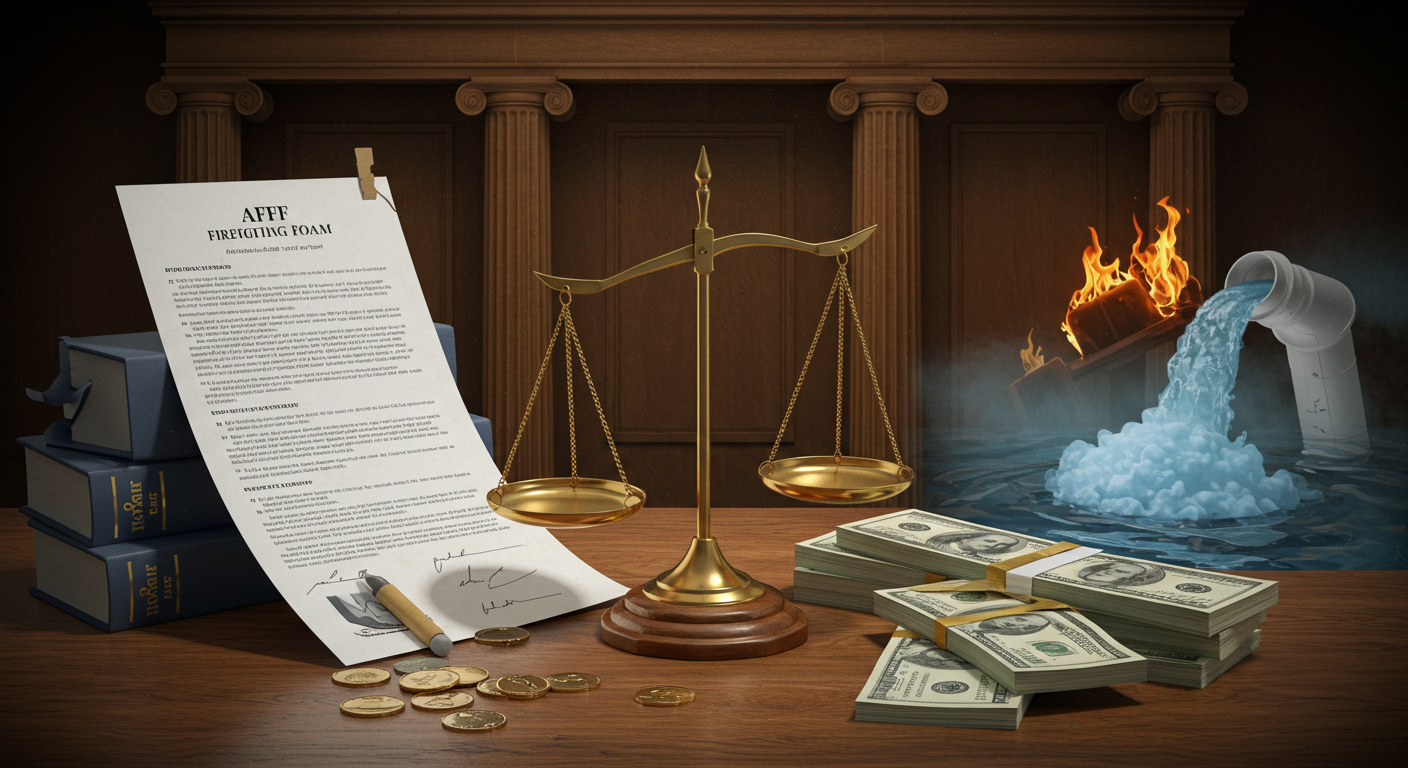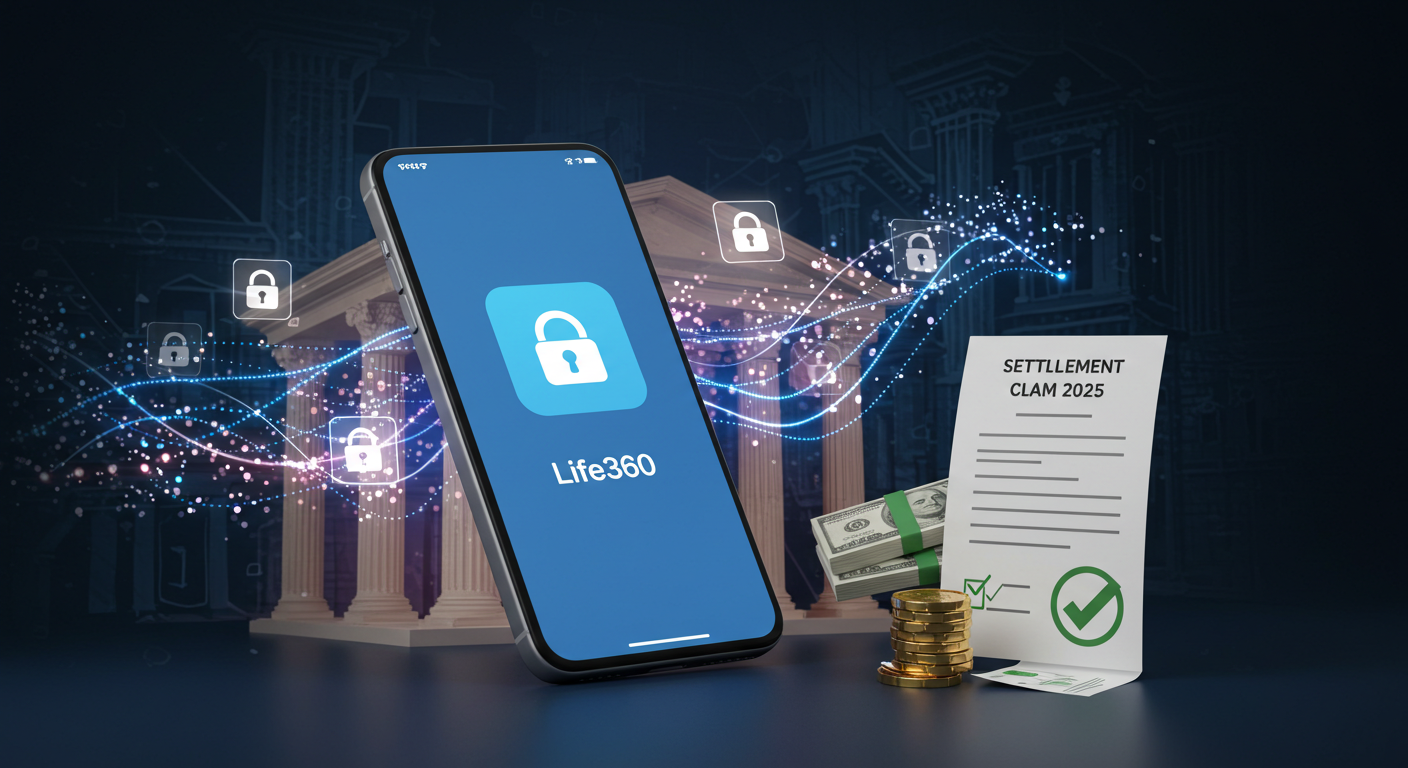Hi, I’m Orland Howell. I’ve spent four years writing about lawsuit settlements in a way that’s easy to understand. I help people learn about their rights without confusion. I’ve covered many cases about hidden fees and auto-renewals, like this one. In this article, I’ll explain the SeaWorld Class Action Lawsuit settlement in very simple words. We’ll talk about what happened, who can get money, and how to get it. All facts come from court papers and official sources, so you can trust them. Let’s start!
What’s the SeaWorld Settlement About?
Picture this: You bought a yearly pass to SeaWorld San Diego. You loved the rides, animal shows, and fun for a year. Then, out of nowhere, your credit card got charged again. You didn’t know the pass would renew by itself! Many people felt upset about this surprise charge.
This settlement comes from a lawsuit started in 2023. It’s called Lomeli and Blanco v. SeaWorld Parks & Entertainment, Inc. Two people from San Diego, Daniel Blanco and Christopher Lomeli, bought passes online. They said SeaWorld didn’t clearly tell them the pass would renew automatically. There was no big reminder email or clear notice on the website—just a new charge after a year.
SeaWorld runs theme parks with sea animal shows. Their San Diego park is a favorite for families. This lawsuit is about yearly passes bought on their website or app. California has rules for auto-renewals. Companies must:
- Tell you clearly the pass will renew on its own.
- Ask you to say “yes” to agree to the renewal.
- Send a reminder before charging you again.
The lawsuit said SeaWorld didn’t follow these rules, so people got charged without knowing. SeaWorld said they did nothing wrong but agreed to pay $1.5 million to settle. On April 18, 2025, the court said the deal looked okay. A final meeting was set for August 2025 in San Diego court. If it’s approved, money will go out soon after.
Why Did This Lawsuit Happen? A Simple Story
Let’s make this easy, like telling a story.
Back on February 28, 2019, people started buying SeaWorld San Diego yearly passes online. These passes let you visit the park as much as you wanted for a year. Sounds fun, right? But the small print said the pass would renew unless you canceled it. Many people didn’t see that part.
In 2023, Daniel Blanco and Christopher Lomeli checked their bank accounts. They saw charges for another year of the pass they didn’t want. They got mad and started a lawsuit in San Diego court. The case number was 37-2023-00008529-CU-BT-CTL.
Judge Gregory Pollack looked at the case. He said it could be a class action, which means it helps many people, not just the two who started it. SeaWorld argued at first but agreed to pay $1.5 million in May 2025 to settle.
Here’s a quick list to show what happened when:
- February 28, 2019: The problem started. People bought passes online, and auto-renewals happened later.
- 2023: Blanco and Lomeli filed the lawsuit.
- April 18, 2025: The court said the settlement looked good.
- May 2025: Notices went out to people who might get money.
- August 2025: The court had a final meeting. If it was okay, payments will start.
- Late 2025 or Early 2026: Money will reach people.
This list shows lawsuits take time, but the wait can mean fair money. From my work on similar cases, most deals like this get approved without big changes.
Who Can Get Money? Check If It’s You
Can you get paid? This settlement is for California people who got surprise charges from the auto-renewal. Not everyone can join. Let’s check the rules.
You need to fit all these:
- You had a California address when you bought the pass. This matches California’s laws.
- You bought a yearly pass for SeaWorld San Diego on their website or app. Passes bought at the park don’t count.
- You bought the pass on or after February 28, 2019, but before February 28, 2024, so the renewal happened by February 28, 2025.
- Your pass renewed itself after the first year, and you were charged by February 28, 2025.
- You didn’t get your money back for that first extra charge. If SeaWorld refunded you, you can’t join.
If this sounds like you, you’re in the “class” and can get money without signing up. The settlement is for U.S. people, but only California addresses work.
How many people are in? We don’t know the exact number yet, but SeaWorld is popular, so it could be thousands. In other cases like this I’ve written about, people got $10 to $100 each. It depends on how many join. The $1.5 million will split evenly after costs.
A tip from my experience: Look at your old emails or bank records for SeaWorld charges around when your pass ended. This helps prove you’re in.
How Much Money Will You Get?
We don’t know the exact amount yet. The $1.5 million is split equally among everyone after paying lawyers and costs. Lawyers might take 25-33%, about $500,000, leaving $1 million to share.
For example, if 20,000 people qualify, each might get around $50. The official website says payments could be $20 to $80, but it depends on how many people claim. You’ll pick how to get paid: bank transfer or check. Notices will come by email 60 days after the final approval. You have 30 days to choose. Bank transfers are fast, in 2-5 days. Checks take longer.
For taxes, this money is for “unfair charges.” If you get over $600, you might need to report it as income. Ask a tax expert for help.
This way of splitting money is normal for these lawsuits. It keeps things fair.
How to Get Your Money: Easy Steps
Great news—you don’t need to fill out forms to get paid unless you want to leave or complain. If you qualify, the money comes to you. Here’s how to make it easy.
Step 1: Check Your Email and Mailbox
Look for a notice called “SeaWorld Annual Pass Settlement.” Check your spam folder too. If you don’t get one by June 2025, you might still qualify—call the settlement team.
Step 2: Do Nothing to Get Paid
If you want the money, just wait. By staying in, you agree not to sue SeaWorld about this again, but you’ll get your share.
Step 3: Pick How to Get Paid
When the notice comes, choose bank transfer or check. Answer within 30 days so it’s not late.
Step 4: Wait for the Final Okay
The court checked the deal in August 2025. If they said yes, payments started within 60 days. Check updates at www.seaworldannualpasssettlement.com.
Step 5: Get Your Money
Watch your bank or mailbox for the payment. If something’s wrong, call the hotline (number on the website).
If you got a refund for the charge already, you’re not in. You can complain about the deal if you think it’s unfair, but you must do it by July 2025. Most people just take the money.
I’ve explained claims like this many times. These steps make it simple.
What Will SeaWorld Change?
This deal isn’t just about money. SeaWorld must make things better to avoid surprises. They agreed to:
- Put clear notices on their website and app about auto-renewals, in big, easy words.
- Ask you to click “yes” to agree to the renewal.
- Send reminder emails 30-60 days before charging you.
- Make canceling easy with one click, no hassle.
These changes will last three years, and the court will check that SeaWorld follows them. This helps all California customers by making things clear.
This shows why settlements are important—they fix problems, not just give money.
Common Questions About the Settlement
People ask me about cases like this a lot. Here are the top questions with simple answers.
Do I Need a Lawyer?
No. The lawsuit’s lawyers do all the work. You can get your own lawyer, but you don’t need one for the money.
What If I Canceled My Pass?
You might still get money if the extra charge happened before you canceled. Check your dates.
Is SeaWorld Closing?
No. This is just one lawsuit. The park stays open for fun.
Can I Still Go to SeaWorld?
Yes. The settlement doesn’t stop you from visiting.
What If I Moved Out of California?
If you had a California address when you bought the pass, you might still qualify. Call the settlement team to check.
These answers come from official FAQs to clear things up.
Why Are These Lawsuits Happening More?
The SeaWorld case is part of a bigger trend. In 2022, the government said companies used “dark patterns”—tricky website designs like tiny print or hidden cancel buttons—to keep people paying.
California made a law in 2018 (Business & Professions Code 17600-17606) that says companies must be clear about auto-renewals. Other states have similar rules. I’ve written about cases with Netflix and gyms, with billions paid out.
Why now? More people shop online, especially on phones, and miss small print. Courts say companies must be honest to protect people.
For families, a surprise $100 charge can hurt. Settlements like this give you back control.
Tips to Avoid Auto-Renew Surprises
From my experience, it’s better to stop problems before they start. Here are easy tips:
- Read the rules before buying. Look for “auto-renew.”
- Put a reminder on your calendar 30 days before the pass ends.
- Use one credit card just for subscriptions to spot charges.
- Cancel in writing if you’re not sure, and save the proof.
- Check your bank account every month for weird charges.
These tips have helped people I’ve worked with for years.
What Are Class Action Lawsuits?
Class actions let many people team up against a company. It makes their voices louder. Good parts: You share lawyers, and it costs you nothing upfront. Bad part: Each person gets a small amount.
For SeaWorld, this lawsuit was the best way. Suing alone would cost too much. The $1.5 million fund is fair.
My work shows courts now want both money and real fixes, like SeaWorld’s new rules.
Final Thoughts: What to Do Now
The SeaWorld settlement is a fair way to help people who got surprise charges. The $1.5 million will pay those who qualify with little work. To get money, you need a California address, a pass bought online after February 2019, an auto-renew charge before February 2025, and no refund.
Disclaimer: This article provides general information only and is not legal advice. Consult a qualified attorney for advice about your specific situation and rights. Settlement details may change; always verify with official sources such as the settlement website or court documents.
Explore More:
Bumble Settlement: $40M BIPA payout & what claimants need to know
Tubi Settlement: $19.99M Payout — Who Got Paid & What Happened Next
Wheat Thins Class Settlement 2025 — Claims Closed (Official $10M Deal, Payouts Up to $20)

Orland Howell is a seasoned content writer with four years of deep expertise in crafting compelling and informative content about lawsuit settlements. With a keen understanding of legal nuances and a talent for translating complex topics into clear, engaging narratives, Orland helps law firms, legal professionals, and clients communicate effectively. His work spans blog posts, articles, whitepapers, and website content, all designed to educate, inform, and drive results. Passionate about empowering audiences with knowledge, Orland combines precision, creativity, and industry insight to deliver content that resonates and builds trust.






